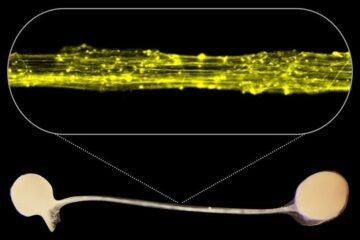Compound kills highly contagious flu strain by activating antiviral protein

This lead compound – which acts by increasing the levels of a human antiviral protein – could potentially be developed into a new drug to combat the flu, a virus that tends to mutate into strains resistant to anti-influenza drugs.
“The virus is 'smart' enough to bypass inhibitors or vaccines sometimes. Therefore, there is a need for alternative strategies. Current drugs act on the virus, but here we are uplifting a host/human antiviral response at the cellular level,” said Dr. Beatriz Fontoura, associate professor of cell biology and senior author of the study available online in Nature Chemical Biology.
According to National Institutes of Health, influenza hospitalizes more than 200,000 people in the U.S. each year, with about 36,000 fatalities related to the illness. Worldwide, flu kills about 500,000 people annually.
In the latest cell testing, the compound successfully knocked out three types of influenza as well as a smallpox-related virus and an animal virus. Because of the highly contagious nature of the 1918 flu, those tests took place at Mount Sinai School of Medicine in New York, one of the few places that stores and runs tests on that flu strain.
The compound is among others that the research team is testing that induce an infection-fighting human protein called REDD1. Until this study, researchers had not demonstrated that REDD1 had this important antiviral function.
“We've discovered that REDD1 is a key human barrier for infection,” said Dr. Fontoura, “Interestingly, REDD1 inhibits a signaling pathway that regulates cell proliferation and cancer.”
The UT Southwestern-led research team tested 200,000 compounds for those that would inhibit flu virus infection. A total of 71 were identified.
Using the two most promising compounds, researchers at UT Southwestern and colleagues at Mount Sinai next will work to strengthen their potencies for further testing. Dr. Fontoura said it can take more than 10 years before successful compounds are developed into drugs.
UT Southwestern researchers involved in the study were lead author Miguel Mata and Neal Satterly, both graduate students in Dr. Fontoura's laboratory; Dr. Doug Frantz, former assistant professor of biochemistry; Shuguang Wei, a senior researcher in biochemistry; Dr. Noelle Williams, associate professor of biochemistry; Samuel Pena-Llopis, assistant instructor in developmental biology; Dr. James Brugarolas, assistant professor of internal medicine; Dr. Christian Forst, assistant professor of clinical sciences; Dr. Michael White, professor of cell biology; and Dr. Michael Roth, professor of biochemistry.
The research was supported by nine National Institutes of Health grants and by the Diane and Hal Brierley Distinguished Chair Fund.
Visit http://www.utsouthwestern.org/infectious to learn more about UT Southwestern's clinical services for infectious diseases and conditions.
This news release is available on our World Wide Web home page at www.utsouthwestern.edu/home/news/index.html
To automatically receive news releases from UT Southwestern via email, subscribe at http://www.utsouthwestern.edu/receivenews
Media Contact
More Information:
http://www.utsouthwestern.eduAll latest news from the category: Life Sciences and Chemistry
Articles and reports from the Life Sciences and chemistry area deal with applied and basic research into modern biology, chemistry and human medicine.
Valuable information can be found on a range of life sciences fields including bacteriology, biochemistry, bionics, bioinformatics, biophysics, biotechnology, genetics, geobotany, human biology, marine biology, microbiology, molecular biology, cellular biology, zoology, bioinorganic chemistry, microchemistry and environmental chemistry.
Newest articles

First model of the brain’s information highways developed
Our human brain is not only bigger and contains more neurons than the brains of other species, but it is also connected in a special pattern: Thick bundles of neurons…

Why getting in touch with our ‘gerbil brain’ could help machines listen better
Macquarie University researchers have debunked a 75-year-old theory about how humans determine where sounds are coming from, and it could unlock the secret to creating a next generation of more…

Attosecond core-level spectroscopy reveals real-time molecular dynamics
Chemical reactions are complex mechanisms. Many different dynamical processes are involved, affecting both the electrons and the nucleus of the present atoms. Very often the strongly coupled electron and nuclear…





















